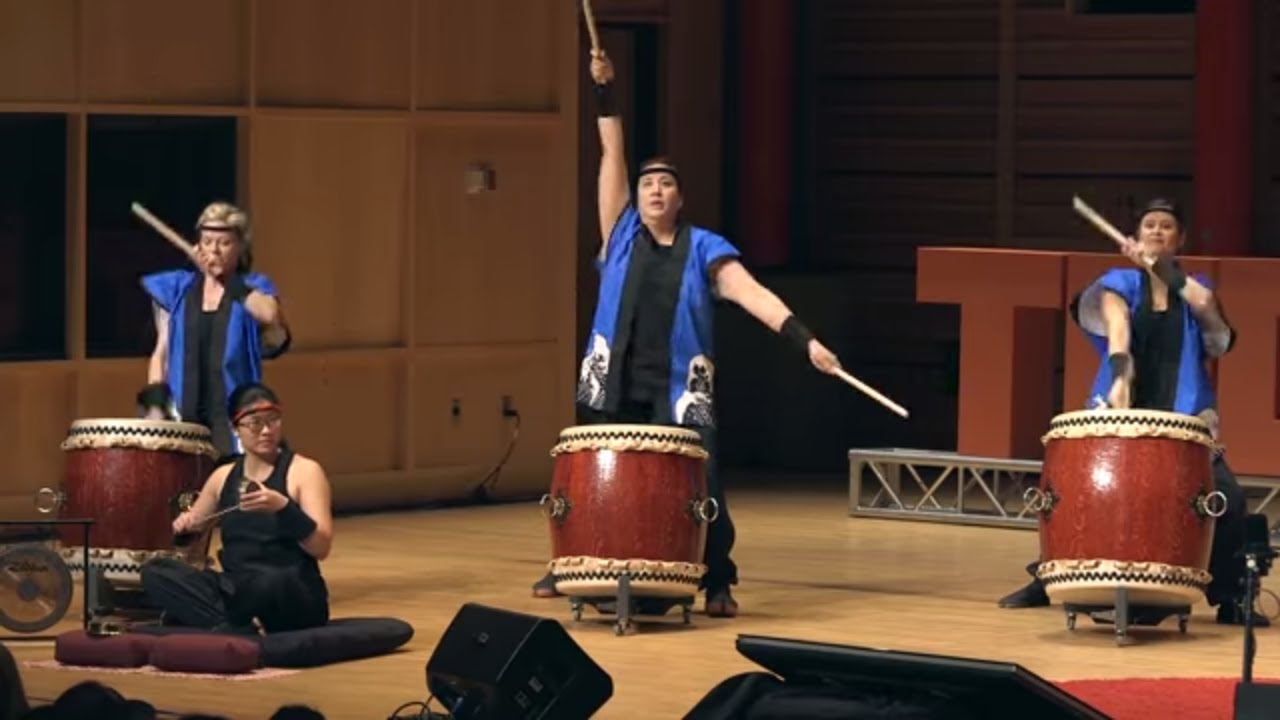Their function has varied throughout history, ranging from communication, military action, theatrical accompaniment, religious ceremony and concert performances. In modern times, taiko have also played a central role in social movements for minorities both within and outside Japan.
Thereof Who created taiko? It was created by Daihachi Oguchi, a jazz drummer who serendipitously stumbled across an old piece of taiko music. Wondering why taiko were never played together, he broke with tradition by forming a taiko drum ensemble.
What is taiko drum pattern? The taiko sounds fall into three classes; small, medium, and large. Often the tone is dampened by leaving the stick on the head. The cadence pattern kashira is executed by placing the left stick over the right shoulder and lifting the right stick high. The left stick then suddenly flashes forward followed by the right.
Regarding this What makes the taiko drum unique? The taiko: a traditional Japanese drum with limitless rhythmic possibilities. … It can be translated as “heartbeat,” the primal source of all rhythm. Indeed, the great taiko is thought to be reminiscent of a mother’s heartbeat as felt from the womb, and babies are often lulled to sleep by its thunderous vibrations.
What is the world’s biggest drum which originated from Japan?
THE BIGGEST OKEDO-DAIKO DRUM WEIGHS 3.5 TONS
Found at Odaiko Hall in Kita-Akita, Akita, Japan, the world’s largest Taiko drum measures 3.8 metres long and only the most experienced drummers are allowed to play it.
Also Know How old are taiko drums? The Birth of Taiko
As percussion instruments are generally the most primitive instrument in any society, the taiko existed and was used in the ancient Japan over 2000 years ago.
Where is the koto played? The Koto is a traditional Japanese musical instrument. It originated from the Chinese Guzheng but developed its own tradition in Japan since the 8th century. It was traditionally played as a form of entertainment in the imperial courts.
identically What family is the koto in? The Japanese koto belongs to the Asian zither family that also comprises the Chinese zheng (ancestral to the other zithers in the family), the Korean gayageum, and the Vietnamese đàn tranh. This variety of instrument came in two basic forms, a zither that had bridges and a zither without bridges.
How do you play taiko drums?
Playing taiko drums involves a visual element as well, so when you strike the drum with the end of your bachi, keep your arms straight and move them straight up and down. When you’re playing a slower tempo, alternate your arms as you strike so 1 is raised while the other strikes the drum.
Also What is the classification of taiko? Taiko
| Percussion instrument | |
|---|---|
| Classification | Percussion |
| Hornbostel–Sachs classification | 212.2 (Instruments in which the membrane is struck directly, which have tubular bodies.) |
| Inventor(s) | Unknown, origin possibly from India, China, or Korea. |
| Developed | 5th-7th century CE |
What is the tempo of taiko drum?
Taiko Drumming is a very happy song by Taiko Drums: Music of Japan with a tempo of 90 BPM. It can also be used double-time at 180 BPM. The track runs 2 minutes long with a F♯/G♭ key and a major mode. It has average energy and is somewhat danceable with a time signature of 4 beats per bar.
How do you play taiko?
What is a Kumi Daiko?
“Kumi-daiko” literally means a taiko ensemble that consists of various taikos. Surprisingly, the Kumi-daiko style was invented in 1950’s by single person although taiko itself has a long history. Daihachi Oguchi, the founder of Osuwa Daiko, created the Kumi-Daiko style in 1951. He was actually a jazz drummer.
as a matter of fact What does shamisen mean in English?
The shamisen ( 三味線 ), also known as the sangen ( 三絃 ) or samisen (all meaning “three strings“), is a three-stringed traditional Japanese musical instrument derived from the Chinese instrument sanxian. It is played with a plectrum called a bachi.
Why do Japanese wear headbands? A hachimaki ( 鉢巻 ) is a Japanese headband, usually made of red or white cloth, typically featuring a design of kanji at the front. It is worn as a symbol of effort or courage by the wearer, especially by those in the military, or to simply keep sweat off of one’s face.
How many islands make up Japan? According to this definition, the Japanese archipelago consists of 6852 islands, including the northern territories (the islands of Etorofu, Kunashiri, Shikotan and Habomai), of which 421 are inhabited and more than 90% uninhabited (Nihon Rito-center, 1996: 1–2).
What country is the bodhran played in?
International use. Although most common in Ireland, the bodhrán has gained popularity throughout the Celtic music world, especially in Scotland, Cape Breton, North mainland Nova Scotia, Newfoundland, and Prince Edward Island. In Southern England tambourines were a popular accompaniment to traditional dance music.
What is the texture of the performance of Taiko Drum Festival? The texture of Taiko music often begins with a solo drummer who cues the other drums in and slowly builds until everyone is playing together. It should be clarified that this refers to rhythmic texture and not harmonic texture.
How is the koto played?
The koto is played by plucking the strings with the thumb and first two fingers of the right hand, which are fitted with ivory plectrums called tsume. The left hand, in traditions after the 16th century, may alter the pitch or sound of each string by pressing or manipulating the strings to the left of the bridges.
What is the history of the koto? Historians think the koto was born around the fifth to third century B.C. in China. Originally it had only 5 strings but increased to 12 strings and then to 13. It was the 13-string koto that was carried to Japan during the Nara period (710-794).
What does koto sound like?
The library’s makers describe the Koto’s sound thus: “It has a lightness of flying butterflies and the sputtering of fish, but has the strength of thunder.” I’d interpret that to mean that although it can sound delicate and pretty, the use of plectra adds an almost steely cutting edge.
What are koto strings made of? koto, also called kin, long Japanese board zither having 13 silk strings and movable bridges. The body of the instrument is made of paulownia wood and is about 190 cm (74 inches) long.
How do I start Taiko?
Are taiko drums pitched? Its body is made of zelkova or pine tree which is hollowed out inside. Cow skin is put over each end and fastened with hemp. This Taiko drum has a high pitched sound and is often used to play fast rhythm.
What does Taiko look like?
taiko, any of various Japanese forms of barrel-shaped drums with lashed or tacked heads, usually played with sticks (bachi). … Festival taiko have a black dot painted in the same spot, but their thicker heads are played with thinner sticks and produce a livelier, “outdoor” sound.
Don’t forget to share this post with your friends !














Leave a Review